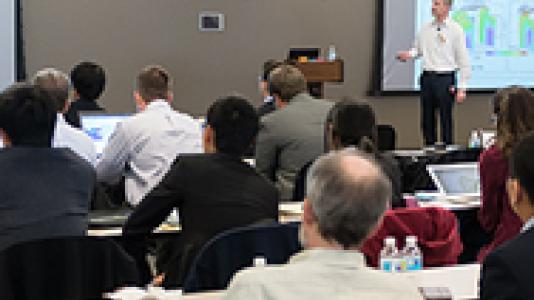
Contrary to what you may have heard, the internal combustion engine is not dead, nor is it dying anytime soon. While electric vehicles continue to grow in popularity, they do not meet all transportation needs. At the same time, accelerating demands for greater fuel efficiency, reduced emissions, new fuel chemistries and faster development cycles have cranked up the pressure on manufacturers to build better internal combustion engines faster.
Two fundamental facts of traditional engine behavior are that fuel combustion varies from engine cycle to cycle and this cycle-to-cycle (cyclic) variability is one of the biggest enemies of consistent engine performance. As engine researchers focus on use of increasingly dilute fuel mixtures in order to meet stringent emissions targets, undesirable (and unpredictable) combustion events like knock and misfire can result, leading to potentially devastating effects on engines and downstream components. Explaining why cyclic variability matters so much to engine manufacturers, Ronald Reese, senior technical fellow at FCA (Fiat Chrysler Automobiles) observed that, “An ‘oops’ in this regard can put a company in peril due to the high cost of safety events and recalls.”
To address the growing importance of understanding cyclic variability in engines, Argonne’s Virtual Engine Research Institute and Fuels Initiative (VERIFI) hosted a workshop in November to explore this topic in depth. Attended by more than 75 invited representatives from industry, academia, national laboratories and government, the event focused on state-of-the-art diagnostic and advanced simulation tools that enable developers to envision, test and refine engine designs to perform well under a wide range of conditions.
Industry executives have recognized that pushing combustion systems to the “ragged edge,” meaning operation under high dilution and at low temperature, is where the next generation of engines will make efficiency gains. Acknowledging this trend, Department of Energy Advanced Fuels and Engines Technology Manager Mike Weismiller commented during the workshop that, “If you want to operate close to the ragged edge, understanding exactly where that edge is becomes very important. With high cycle-to-cycle variability, you can’t play too close to the edge, because that edge is moving around on you. A better understanding of the nature and causes of cycle-to-cycle variability is important, because it enables the potential for mitigation and control.”
Combustion researchers have long recognized the phenomenon of cyclic variability. Unfortunately, the micro-events contributing to it are difficult to reproduce reliably in the experimental realm, making them challenging to study and understand. Heralding a development that’s likely to help address those challenges, VERIFI researchers recently published work demonstrating that machine learning models can implicitly learn the complex relationships that contribute to cycle-to-cycle variability. According to Argonne Mechanical Engineer Muhsin Ameen, “Using high-fidelity simulations, new parallel simulation techniques and high-performance computing can bring engine simulation time down from several months to a couple of weeks.”
At the close of the workshop, VERIFI Group Leader Sibendu Som announced that he and Doug Longman, Argonne section leader for engine combustion research, plan to form a consortium to advance the use of experimental and computational tools to characterize cyclic variability and identify how best to apply that knowledge to future engine designs.